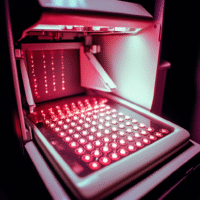Clinical trials
-
Improving Epilepsy Care: Benefits of Internet Hospital Follow-Up for Patient Quality of Life
Understanding the Benefits of Internet Hospital Follow-Up for Epilepsy Patients What Worked? Patients receiving follow-up care through Internet hospitals (IHs) reported a better quality of life compared to those who received traditional outpatient follow-up. Improvements were seen in anxiety and depression levels among patients using IHs. Specific areas of improvement included emotional well-being, energy levels, […] ➡️➡️➡️
-
Direct-Access Physiotherapy: Enhancing Pediatric Emergency Care for Musculoskeletal Issues
Objective of the Study This study looked at whether allowing children and teens to see a physiotherapist directly in the emergency department (ED) for muscle and bone issues would be helpful compared to the usual care from a doctor. What Worked? The study successfully enrolled 53% of eligible patients in just 2 months. 92% of […] ➡️➡️➡️
-
Esketamine vs Remifentanil: Impact on Hemodynamics in Septic Shock Patients on Mechanical Ventilation
Understanding the Trial Results The study compared two medications, esketamine and remifentanil, for patients with septic shock who needed mechanical ventilation. Here’s what we found: What Worked? Less Norepinephrine Needed: Patients who received esketamine needed less norepinephrine, a medication used to stabilize blood pressure, compared to those who received remifentanil. Stabilizing Hemodynamics: Esketamine may help […] ➡️➡️➡️
-
Noninvasive Machine Learning Model for Accurate Tuberculous Pleural Effusion Diagnosis
Understanding the Study Results This study developed a new machine learning model to diagnose tuberculous pleural effusion (TPE) quickly and without invasive procedures. The model uses routine lab tests to provide accurate results. What Worked: The Light Gradient Boosting Machine (LGBM) model was the most effective among ten tested models. It achieved high accuracy, with […] ➡️➡️➡️
-
Efficacy of Dextrose Prolotherapy in Treating TMJ Disc Displacement Symptoms: A Pilot Study Insights
Understanding the Study Results This study looked at how well a treatment called Dextrose prolotherapy works for women with a specific jaw problem known as Temporomandibular Joint (TMJ) Disc Displacement without Reduction (DDwoR). This condition can cause pain and make it hard to open the mouth. The study involved 20 women who had not found […] ➡️➡️➡️
-
Combining Tislelizumab with Capecitabine: A New Hope for Adjuvant Treatment in Biliary Tract Cancers
Understanding the Trial Results This clinical trial looked at whether combining a drug called tislelizumab with capecitabine could help patients with biliary tract cancers (BTC) after surgery. The main goal was to see if this combination could prevent cancer from coming back compared to using capecitabine alone. What Worked? The combination of tislelizumab and capecitabine […] ➡️➡️➡️
-
Cognitive Screening for MCI: MoCA’s Reliability in Patients with Depression
Understanding the Study Results The study looked at how depression affects cognitive testing in older adults. It specifically used a test called the Montreal Cognitive Assessment (MoCA) to see if people with different levels of depression performed differently. Here’s what they found: No Differences Found: People with no depression, mild depression, or severe depression scored […] ➡️➡️➡️
-
Improving Management of Unexplained Fatigue in Primary Care Using a Differential Diagnosis Aid
Study Results: What Worked and What Didn’t The study tested a new tool called the Fatigue Differential Diagnostic Aid (FDDA) to help doctors understand and manage unexplained fatigue in patients. Here’s what we found: What Worked: Patients using the FDDA reported feeling less fatigue compared to those receiving usual care. Patients were more satisfied with […] ➡️➡️➡️
-
“Understanding Hair Cortisol and Anandamide Levels in Pediatric Major Depressive Disorder”
Understanding the Trial Results This study focused on children and teenagers with major depressive disorder (MDD). The researchers looked at two important substances in the body: cortisol, a stress hormone, and anandamide (AEA), which is linked to mood. They found that: Children with MDD had lower levels of both cortisol and AEA compared to healthy […] ➡️➡️➡️
-
Efficacy of Tislelizumab in Enhancing Progression-Free Survival After Endoscopic Surgery for Nasopharyngeal Carcinoma
Understanding the Trial Results The trial tested a new treatment called tislelizumab, given after surgery for patients with resectable recurrent nasopharyngeal carcinoma (rNPC). Here’s what we found: What Worked? Tislelizumab improved the time patients lived without their cancer returning (progression-free survival or PFS). In the tislelizumab group, 94% were still cancer-free after one year, compared […] ➡️➡️➡️
-
“Water-Assisted Colonoscopy: A Safe, Effective Technique for Novice Endoscopists”
Understanding the Trial Results The trial compared two methods for colonoscopy: water-assisted colonoscopy (WAC) and conventional carbon dioxide insufflation colonoscopy (CC). It involved beginner endoscopists who had performed fewer than 150 procedures before. What Worked? WAC was found to be a safe and effective alternative to CC. Procedure times were similar for both methods. Patients […] ➡️➡️➡️
-
“Enhancing Non-Surgical Periodontal Therapy: The Role of Injectable Platelet-Rich Fibrin and Vitamin C”
Trial Results Explained The study tested a treatment for stage-II periodontitis, which is a type of gum disease. It looked at three groups: First group: Received professional cleaning plus injectable platelet-rich fibrin (I-PRF) with vitamin C. Second group: Received professional cleaning plus I-PRF without vitamin C. Third group: Received only professional cleaning. Here’s what the […] ➡️➡️➡️
-
“Combining Sensorimotor and Core Strength Training to Alleviate Low Back Pain in Adult Scoliosis: A Clinical Trial Overview”
Understanding the Trial Results This study looked at how well sensorimotor training (SoMT) combined with core strength training (CST) can help adults with low back pain and scoliosis. Here’s what they found: What Worked? The combination of SoMT and CST may reduce low back pain significantly. Patients may also see improvements in their overall health […] ➡️➡️➡️
-
Cost-Effectiveness of Massed vs. Spaced Treatment for PTSD in Adults with Multiple Trauma
Understanding the Trial Results This research compares two types of treatments for adults with post-traumatic stress disorder (PTSD) who have experienced multiple traumatic events. The two treatments are: Spaced Trauma-Focused Treatment (S-TFT): This is the standard treatment, where patients attend weekly sessions. Massed Trauma-Focused Treatment (M-TFT): This involves more frequent sessions, potentially leading to faster […] ➡️➡️➡️
-
Enhancing Quality of Life for People Living with HIV: Insights from the ExtraCECI Trial in Ghana
Understanding the ExtraCECI Trial Results The ExtraCECI trial aimed to improve the quality of life for people living with HIV/AIDS in Ghana. Here’s what the results mean for patients and clinics: What Worked? The ExtraCECI intervention helped improve the overall quality of life for participants compared to standard care. Healthcare professionals received training to provide […] ➡️➡️➡️
-
Extended CT Angiography Increases Cardioaortic Thrombus Detection in Ischemic Stroke Patients
Understanding the Trial Results The trial looked at how well extended CT angiography works compared to standard CT angiography in finding blood clots in the heart and aorta in patients who had a stroke or a mini-stroke. Here’s what we found: What Worked: Extended CT angiography detected more cardioaortic thrombi (blood clots) than standard CT […] ➡️➡️➡️
-
Bridging the Gap: How Telephone Reporting of Patient-Reported Outcomes Improves Cancer Care Disparities
Understanding the PRO-TECT Trial Results The PRO-TECT trial looked at how patients report their symptoms during cancer treatment. It offered two ways for patients to share their health updates: through the internet or by phone. This study aimed to see if using a phone option could help patients who might not have easy internet access. […] ➡️➡️➡️
-
“Reducing Bloodstream Infections: Hypochlorous Acid vs. Povidone-Iodine in Catheter Care”
Trial Results Explained The study compared two antiseptics used for cleaning central catheters in intensive care units: one with hypochlorous acid and the other with povidone-iodine. The results showed that: The group using hypochlorous acid had fewer infections related to their catheters compared to the group using povidone-iodine. Signs of infection at the catheter site […] ➡️➡️➡️
-
Impact of Pulmonary Rehabilitation on Quality of Life in ICU COVID-19 Patients
Study Overview This study looked at how pulmonary rehabilitation (PR) helps patients with COVID-19 who were in the intensive care unit (ICU) and after they left the hospital. We wanted to see if PR could improve breathing difficulties, daily activities, anxiety, depression, and overall quality of life. What Worked Pulmonary rehabilitation had positive effects on […] ➡️➡️➡️
-
“Enhancing Digital Mental Health Interventions: Safe Use of Generative AI for Improved User Experience”
Understanding the Trial Results What Worked? Both the generative AI and rules-based digital mental health interventions (DMHIs) provided similar user experiences. The generative AI was better at understanding and responding with empathy, achieving 98% accuracy compared to 69% for the rules-based version. No serious problems or harmful events occurred during the trial. Technical safeguards for […] ➡️➡️➡️













